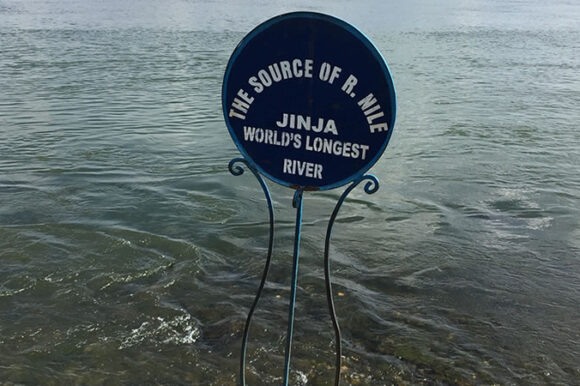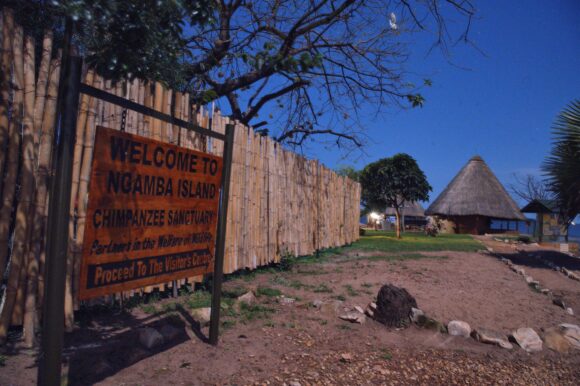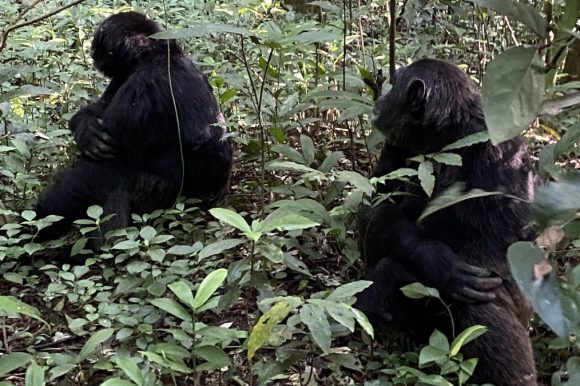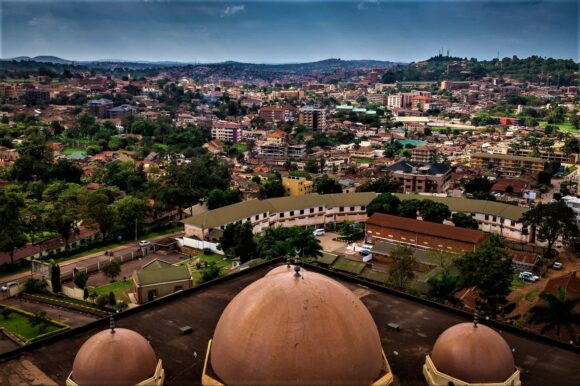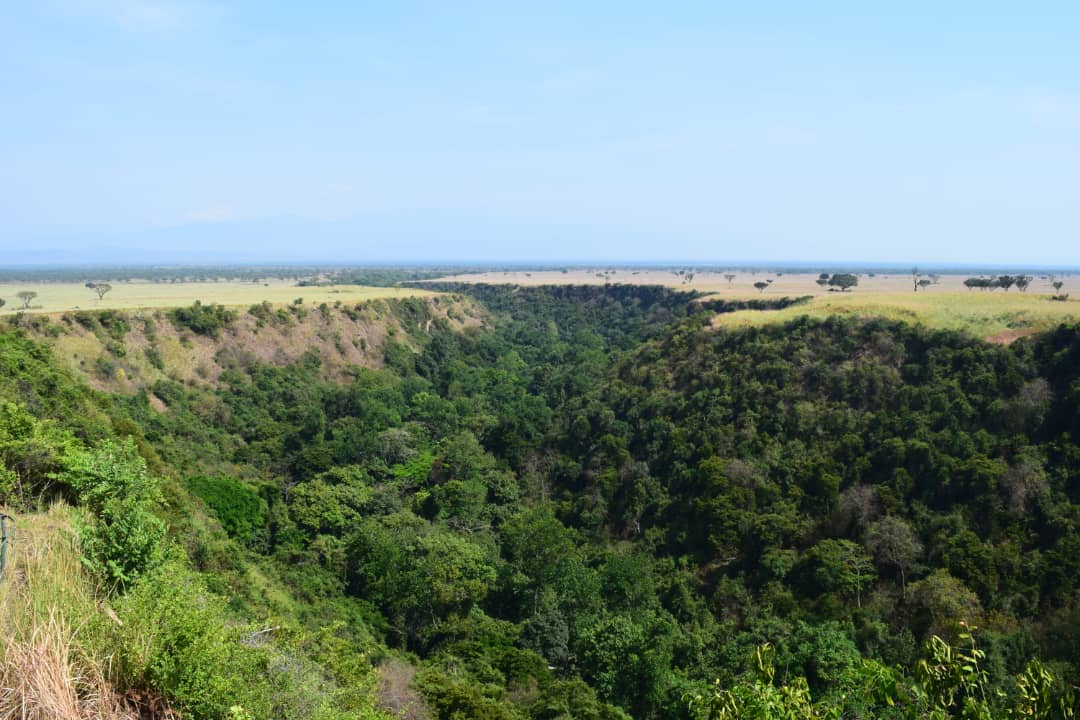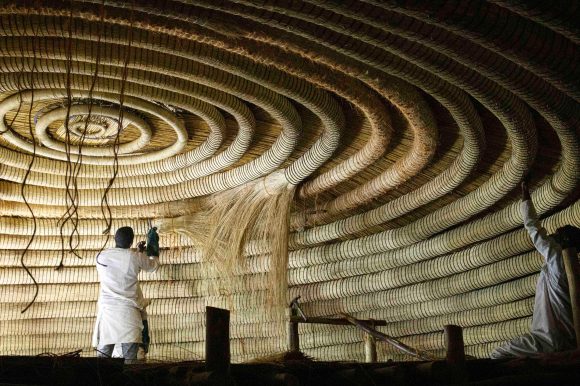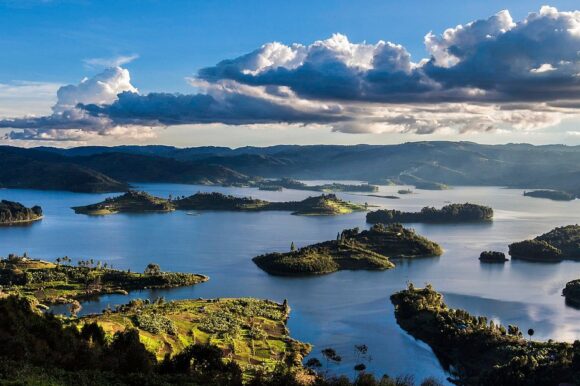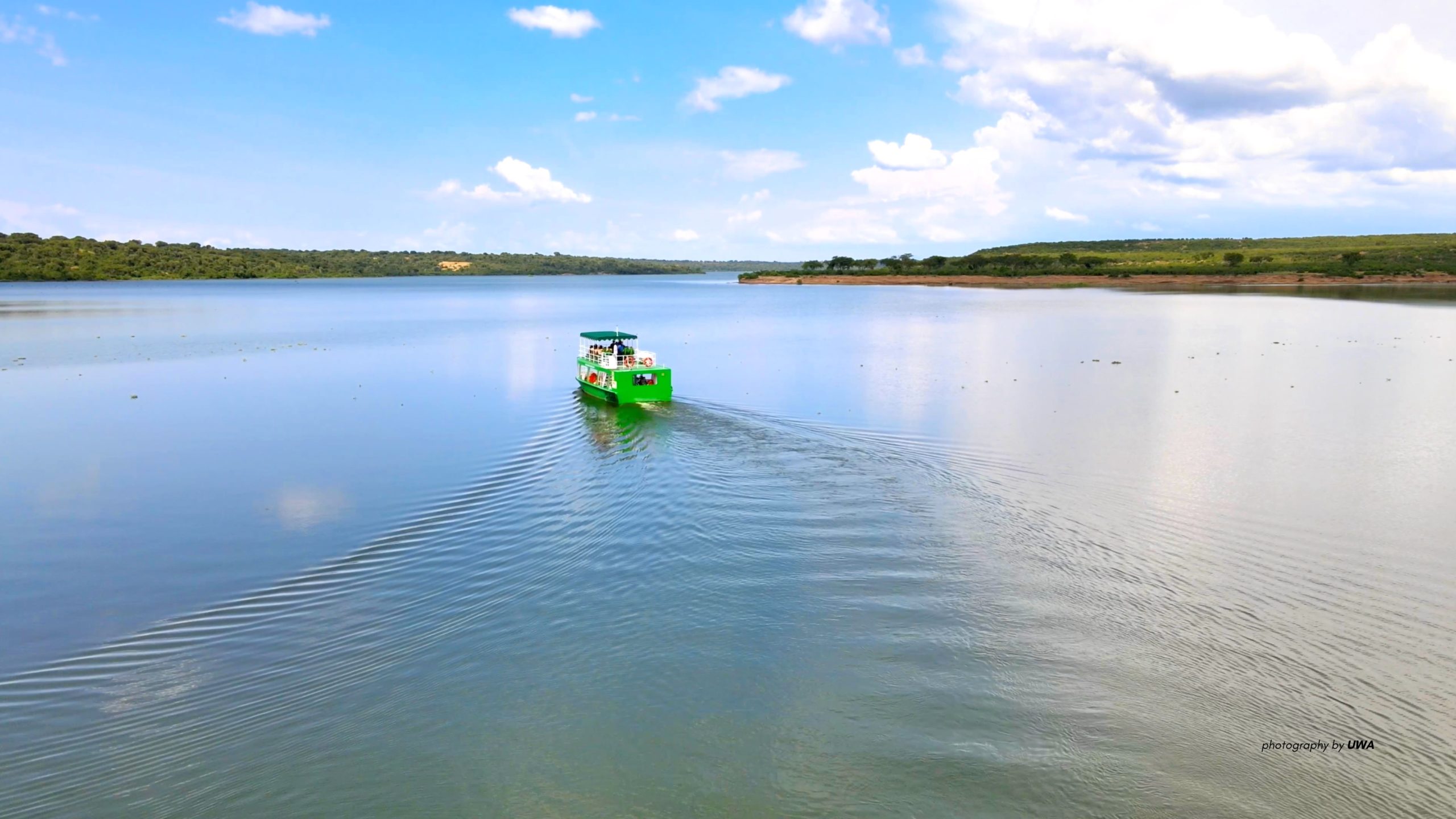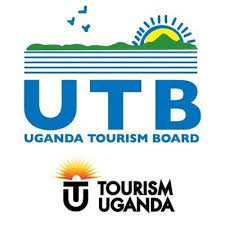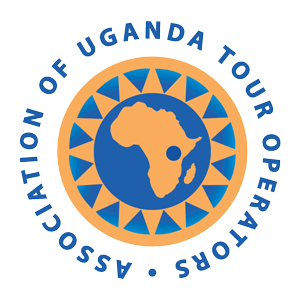SSEZIBWA FALLS- A natural and cultural heritage site. SSEZIBWA FALLS- A natural and cultural heritage site. 35km from Uganda’s capital-...
Destination Uganda
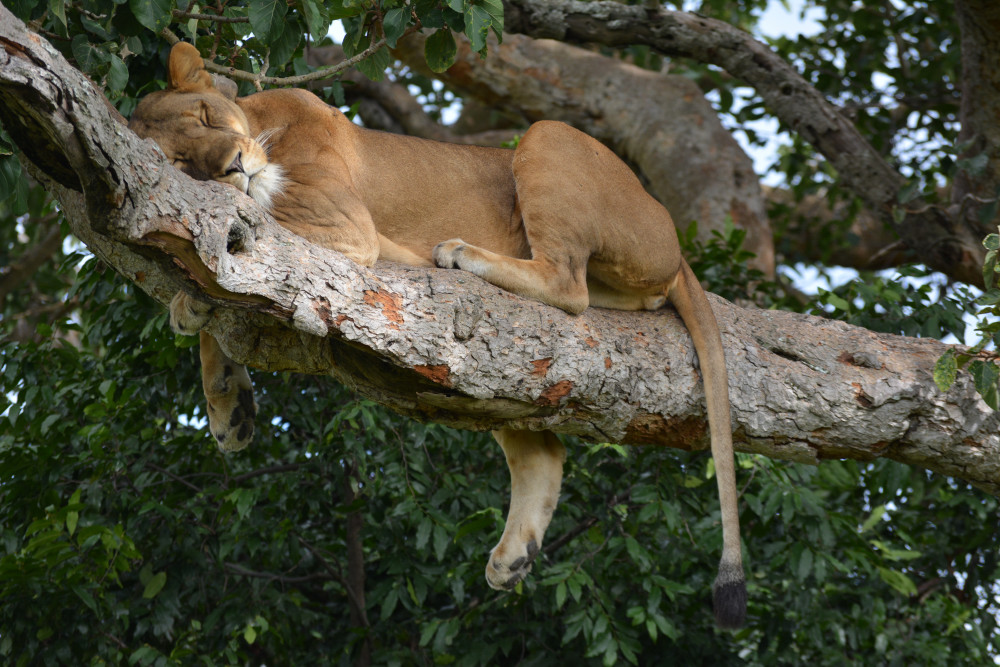
Uganda, Africa’s #1 safari destination.
Did you know Uganda is ranked among the top 10 safest countries in the world? Well, it doesn’t only happen to be the safest but has a lot of hidden adventurous facts that will leave you amazed and in awe. One of the most popular adventures on a Uganda safari is gorilla trekking.
Gorilla trekking involves hiking through dense thick vegetation and mixed forest in search of gorillas.
Uganda is home to more than half of the entire world’s gorilla population with over 500 gorillas that live in over 50 families which a distributed in Bwindi and Mgahinga national parks.
Gorilla Safari Destinations in Uganda.
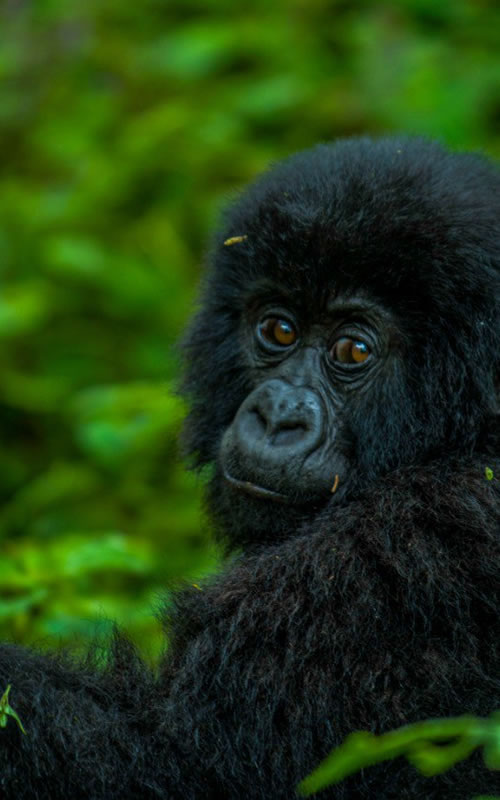 Gorilla Trekking in Bwindi Impenetrable National Park
Gorilla Trekking in Bwindi Impenetrable National Park
Bwindi Impenetrable National Park is located in the southwestern part of Uganda on the rim of the Rift Valley.
Bwindi Impenetrable National Park is one of Africa’s most ancient wildlife habitats dating to over 25000 years ago. The major attraction in Bwindi Impenetrable National Park is the mountain gorillas.
Bwindi national park is home to over 500 individual gorillas more than half of the entire world gorilla population of 1004 individuals. The other half is in Rwanda and Virunga National Park in D.R. Congo.
Gorillas live in groups known as families headed by one male called a silverback. Uganda has over 50 gorilla families and 13 individuals live solitary.
There are now 25 gorilla families habituated in Bwindi Impenetrable National Park which can be accessed by visitors in four gorilla trekking sectors and these are Buhoma, Ruhija, Rushaga, and Nkuringo.
About Uganda
 Uganda is a landlocked country located in the eastern part of the continent of Africa. It has a diverse landscape encompassing of the snow-capped Rwenzori Mountains and immense Lake Victoria. The abundant wildlife consists of chimpanzees and rare bird species. The Bwindi Impenetrable National Park is a renowned mountain gorilla sanctuary. Murchison Falls National Park in the northwest is known for its wildlife and a 43-meter-tall waterfall which is regarded as the world’s strongest waterfalls.
Uganda is a landlocked country located in the eastern part of the continent of Africa. It has a diverse landscape encompassing of the snow-capped Rwenzori Mountains and immense Lake Victoria. The abundant wildlife consists of chimpanzees and rare bird species. The Bwindi Impenetrable National Park is a renowned mountain gorilla sanctuary. Murchison Falls National Park in the northwest is known for its wildlife and a 43-meter-tall waterfall which is regarded as the world’s strongest waterfalls.
Uganda has an area that stretches as far as 241,038 square kilometers. It borders the countries of South Sudan from the north, Kenya from the east, Tanzania from the South, Rwanda from the southwest and the Democratic Republic of Congo from the west. English is the official language for Uganda with the Ugandan shillings as the main currency. President Museveni is the current sitting president of Uganda.
Uganda was formerly a British protectorate from 1894 to 1962 when Uganda gained its independence. The protectorate of Uganda was formerly controlled by the Imperial British East African Company before it ran bankrupt. This was due to the internal religious wars in Uganda. After acquiring full control of the protectorate of Uganda, the British government extended its administration from the Buganda kingdom which the Imperial British East African Company controlled to other kingdoms. This was done by signing different treaties with different kingdoms like the Toro Kingdom, Ankole Kingdom, Bunyoro Kingdom, and the rest. This extended the British administration as far as the current country’s borders.
The British government in the 1890s recruited over 32,000 laborers from British India to construct the Ugandan railway in 1896. Some of these Indians after the construction returned home and others decided to stay in East Africa and became traders. During World War II from 1939 to 1945, the British recruited over 77, 143 African soldiers to fight alongside Britain in the King’s African rifles. These soldiers were recruited from different kingdoms across Uganda where the Kings gave out their best warriors to go and fight alongside the British.
On the 9th of October 1962 at exactly 00:00 hours at Kololo independence grounds the Union Jack was lowered as the Ugandan flag was raised and Uganda gained sovereignty from the British government. Uganda had officially attained independence and became a republic but decided to still be part of the commonwealth nations. In the same year, 1962 elections were organized and a collaboration of Uganda People’s Congress and Kabaka Yekka won the elections and gained governance of the entire country. Sir Edward Mutesa II became president of the newly independent Uganda and Dr. Milton Obote became the prime minister.
In 1966 tensions broke out over the prime minister and the kabaka of Buganda who was also the president on different issues. Some of these issues included debates in the parliament to give some parts of the vast Buganda kingdom to Bunyoro but that was by the kabaka and his supporters. The privileges of the Buganda kingdom over other kingdoms also sparked tensions between the prime minister and the president. In May 1966 the Kabaka with the help of the Buganda parliament made a move to remove the Uganda government from Buganda including the capital. In response, Doctor Milton Obote ordered the army commander Colonel Idd Amin Dada to invade the kabaka’s palace, and over 2,000 lives were lost.
After intense fighting, the Kabaka escaped and was exiled to London and this invasion was regarded as the Buganda crisis. After the invasion, Obote suspended the constitution and removed the ceremonial president and vice president. The following year in 1967 a new constitution was made traditional kingdoms were abolished and Uganda was proclaimed a republic as Dr. Milton Obote declared president.
On the 25th of January 1971, Amin took over power and overthrew Obote while he was attending a commonwealth summit in Singapore. In 1979 he was also overthrown by a collaboration of Uganda soldiers and Tanzanian soldiers and the reign of Obote II began.
In 1980 Yoweri Museveni through and guerilla bush war that took six years threw the then-sitting government and took over power. Elections were later organized in 1996 and Museveni won and since then he has been president of the republic of Uganda.
Uganda largely has a tropical climate with two rainy seasons per year that is in March to May and September to December. The northern region of Uganda lies outside the tropical belt and thus experiences only one rainy season, March to October. This region forms one-quarter of the entire country and the rest of Uganda lies within a relatively humid equatorial climate zone. Due to the lakes and rivers, topography, prevailing winds, and the forests cause large differences in rainfall patterns across the country.
Due to Uganda’s strategic location on the equator, Uganda experiences moderate temperatures throughout the year around 22.8°C. Monthly temperatures range between 21.7°C in July and 23.9°C in February. During this period the total annual average rainfall precipitation is about 1,197 mm and the mean monthly rainfall precipitation of the country varies from 39.6 mm in January to 152.7 mm in April.
The climate of Uganda has two dry seasons and two wet seasons. The dry seasons begin from December to February and June to July and two wet seasons start from September to November and March to May. While the rest of Uganda has two seasons, the northeastern region experiences one continuous wet season from March to November and a dry season from December to February.
Uganda is a popular safari destination in Africa and the entire world because of its diverse and stunning landscapes. Having attractions that have been preserved and protected in their most natural state, Uganda prides itself as the pearl of Africa as Churchill named her. Some of the different popular attractions in Uganda include the following;
- Queen Elizabeth National Park
Queen Elizabeth National Park is located in the western region of Uganda approximately 400 kilometers west of the capital city Kampala. It lies in the western arm of the Great Rift Valley and is the most popular safari destination in the country. The tree-climbing lions are the most popular and major tourist attraction in Queen Elizabeth National Park. This is due to their unique ability to climb trees which is not a common behavior of some other lions in Africa.
Tree-climbing lions are only found in two places in East Africa. These are the Ishasha region of Queen Elizabeth National Park in Uganda and Lake Manyara in southern Tanzania. The tree-climbing lions in Ishasha are seen during game drives in the national park. These lions usually rest and lie peacefully on top of fig trees and cactus branches away from the scorching heat of the day.
- Murchison Falls National Park
Murchison Falls National Park is the largest and oldest national park in Uganda located in the northern part of the country. The powerful Murchison Falls are the major tourist attraction of the park. Located on the river Nile, the falls are considered to be the strongest waterfalls in the world.
Large volumes of water squeeze through an 8-meter space between the rock walls. At a very high speed, it plunges over a 45-meter remnant rift valley wall into a 50-meter radius of Devil’s Cauldron. This intense battle between the water and the rift valley walls forms the thunderous roar of the Murchison Falls and creates a trademark rainbow above the falls.
- The River Nile.
The river Nile is another major tourist attraction in Uganda. The river Nile is the longest in the world and has its source at Lake Victoria in Jinja. The river stretches as far as Egypt through South Sudan and Sudan. The river Nile is a major source of life for flora and fauna across the entire country. River Nile is home to countless Nile crocodiles the biggest reptile in the world, crowed with large numbers of hippos and countless fish species.
- Rwenzori Mountain.
Rwenzori Mountain is located in the southwestern region of Uganda on the east side of the western Albertine rift valley. It lies along Uganda’s border with the Democratic Republic of the Congo. Rwenzori has four peaks that is Mount Baker 4,842m, Margherita Peak 5,109m, Mount Speke 4,890m, and Weismann’s Peak 4,620m. The highest peak of mountain Rwenzori is Margherita.
- Kibale National Park.
Located in the western part of Uganda in the district of Kabarole, Kibale National Park is famous and popular for its large population of chimpanzees. Kibale National Park is considered one of the best destinations to track wild chimpanzees on Earth. The Kibale chimpanzee population gush of about 1500 individuals of chimpanzees which are divided into dozens of families. The park gives tourists an amazing opportunity to view these endangered primates up close.
Uganda also boasts amazing activities to add to your gorilla safari. These activities include the following;
- Game drives.
Games drives offer an opportunity for visitors to have a glimpse of the game out in African savannah while seated in the comfort of their vehicle. These animals can be viewed during game drives especially in the early mornings and late evenings of the dry season as they graze and hunt.
- Boat cruise
The boat cruise is a 3-hour boat ride experience on some of the water bodies. It offers an opportunity for tourists to view and explore the wildlife along the lakes and rivers. These include hippos, crocodiles, elephants, buffalos, and different bird species to mention but a few. These come to take a drink and cool off their bodies from the basking sun. Boat cruise is done in two sessions one in the morning from 11 am to 1 pm and the second one from 2 pm to 5 pm.
- Chimpanzee trekking
Chimpanzee trekking is mainly done in Kibale National Park but also in Queen Elizabeth National Park in the Kyambura Gorge. It involves trekking or walking through the rainforests looking for chimpanzees for about 2-5 hours. This duration depends on the location of the primates and on finding them. After their location, visitors are limited to only one hour in the presence of these endangered primates.
Uganda was recently named among the top 10 safest countries in the world. For over 38 years that is since 1986, Uganda has never had any war. The Uganda Peoples Defense Forces have done a great job of keeping the country secure from any internal or external threat. The security forces have also helped in bringing peace and stability in some other African countries like DRC and Somalia.
Uganda has very hospitable people which makes it very easy for any foreigner coming into the country. The diverse mouthwatering types of fruits and local foods leave a heightened appetite in anyone. The cost of living in Uganda is very low and Kampala was named among the cities with the lowest cost of living. This makes it very easy to live in Uganda.
However, it is important to strictly follow the rules and regulations regarding travel during your stay in Uganda. Ensure respect for boundaries and do not provoke violence. Make the most of your Uganda safari guide for a comfortable and safe stay.
The improved road network system in the country has made it easy to navigate around the country. Other than using the common road transport means, you may choose to fly during your Uganda safari. There are several networks of airfields across the country. All these are connected to Uganda’s major airport – Entebbe International Airport. The beauty of using the road during your Uganda safari is the chance to interact with the local members of the communities. You get to experience the country right in the palm of your hands.
Traveling to Uganda requires you to have applied for a visa online. There are different types of visas offered by Uganda and these include Uganda tourist visas – single entry, diplomatic and official visas, transit visas, multiple-entry visas, and East African Tourist Visa.
Uganda’s outstanding features such as the largest freshwater lake on the continent, the source of the longest river, the strongest waterfall, the largest number of primates, and the highest number of mountain gorillas worldwide. Coupled with the strategic location on the equator and the security, all these and more make Uganda one of the best gorilla safari destinations in the world. This is why Churchill Winston named it ‘’the pearl of Africa’’.
Top Destinations in Uganda
AMABERE GA NYINA MWIRU CAVES
AMABERE GA NYINA MWIRU CAVES Geography is full of wonder and amazement. While Fort Portal town is famous for dozens...
SEMPAYA HOT SPRINGS
SEMPAYA HOT SPRINGS SEMPAYA HOT SPRINGS Each of Uganda’s national parks has a unique feature that usually is its biggest...
NGAMBA ISLAND
Ngamba Island Sanctuary, the jewel of Lake Victoria. Founded in 1998, Ngamba Island Chimpanzee Sanctuary sits on 95 acres of...
KALINZU FOREST RESERVE
Kalinzu Forest Reserve – Chimpanzee trekking and more. Sitting on 147 square kilometers of land Kalinzu Forest Reserve is a...
KAMPALA CITY
Kampala City – Beauty, History and Culture. Ssekabaka Mutesa I, the former king of Buganda, had chosen the area that...
KYAMBURA GORGE
Kyambura Gorge – the Valley of Apes. Uganda’s most scenic and second-largest conservation Area- Queen Elizabeth National park that is...
WORLD HERITAGE SITES IN UGANDA
UNESCO World Heritage Sites in Uganda. (UNESCO), the United Nations Educational, Scientific and Cultural Organization. It is an agency under...
LAKE BUNYONYI
Lake Bunyonyi – Best Water Front Chill out Venue You shouldn’t be surprised when we say Uganda has it all,...
QUEEN ELIZABETH NATIONAL PARK
Queen Elizabeth National Park: Why you should include it on your destinations in Uganda. Queen Elizabeth national park is one...
KAZINGA CHANNEL
KAZINGA CHANNEL: Hippos, crocodiles and more. Cruising up the Kazinga Channel in Queen Elizabeth national park is one of all-time...

